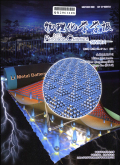物理化学学报2024,Vol.40Issue(7):1-6,6.DOI:10.3866/PKU.WHXB202306029
金属纳米晶体电催化剂的电化学合成:原理、应用与挑战
Electrochemical Synthesis for Metallic Nanocrystal Electrocatalysts:Principle,Application and Challenge
摘要
Abstract
Nanoscale metallic catalysts are garnering increased attention in the advancement of electrochemical energy conversion technologies.The precise control of nanocrystal morphology,size,and crystalline structures offers the ability to manipulate electronic properties and enhance intrinsic catalytic performance.Consequently,a profound understanding of the nanocrystal growth mechanism becomes imperative for the design and production of highly active catalysts.However,mechanism studies in colloidal methods generally depend on operando technics and the development is hindered by expensive cost and limited resources.And high-temperature or high-pressure reaction conditions always bring trouble for the application of the equipment,so the in situ methods have been widely used.While ex situ methods need to detach the samples from the reaction environment,which might lose information about the process and thus fail to reflect the real situation.Furthermore,in conventional methods,the use of macromolecular organics to regulate crystal morphology results in intricate post-treatment processes,and any residual substances can adversely affect catalyst performance.Electrochemical synthesis offers a clean and controllable protocol for producing metallic nanocrystals and supported heterogeneous nanoparticle catalysts.In this review,building upon the classic principles of crystal growth in chemical colloidal methods and electrodeposition,it is proposed that the processes occurring during crystal formation could be visualized or monitored through electrochemical tests.By fine-tuning electrochemical parameters and refining deposition procedures,nucleation density and growth rates along specific facet orientations of nanocrystals can be precisely managed.Electrochemical signals provide insights into in-situ reduction and deposition behaviors at the electrode-electrolyte interfaces through professional analysis.The direct loading of nanocrystals onto substrates amplifies their synergistic effects,mitigates exfoliation issues,and consequently enhances catalytic activity and stability.Additionally,due to its broader potential window compared to H2O,non-aqueous liquids hold promise as a solution for preparing active metals and alloys that exhibit distinctive catalytic performance.Furthermore,electrochemical methods facilitate the synthesis of compounds composed of metallic and nonmetal elements,including metal oxides and phosphides.Thus,electrochemical techniques are poised to offer potential high-performance nanoscale metallic catalysts along with profound insights into the crystal growth mechanism.Nevertheless,a critical challenge hindering the application of electrochemical methods lies in bridging the considerable gap between catalysts and the preparation of electrode-level catalyst layers.The electrochemical signal proves highly sensitive to variations in the reaction environment,and discrepancies in electrode and system properties can lead to distinct electrochemical responses.Consequently,thorough investigations are imperative to address these issues.关键词
电化学能量转化反应/纳米金属电催化剂/高催化性能/电化学合成/晶体生长机理Key words
Electrochemical energy conversion reaction/Nanoscale metallic electrocatalyst/High catalytic performance/Electrochemical synthesis/Crystal growth mechanism分类
化学引用本文复制引用
赵路甜,郭杨格,罗柳轩,闫晓晖,沈水云,章俊良..金属纳米晶体电催化剂的电化学合成:原理、应用与挑战[J].物理化学学报,2024,40(7):1-6,6.基金项目
The project was supported by the National Key Research and Development Program of China(2021YFB4001301)and the Oceanic Interdisciplinary Program of Shanghai Jiao Tong University(SL2021ZD105).国家重点研发计划(2021YFB4001301)和上海交通大学"深蓝计划"基金(SL2021ZD105)资助项目 (2021YFB4001301)

